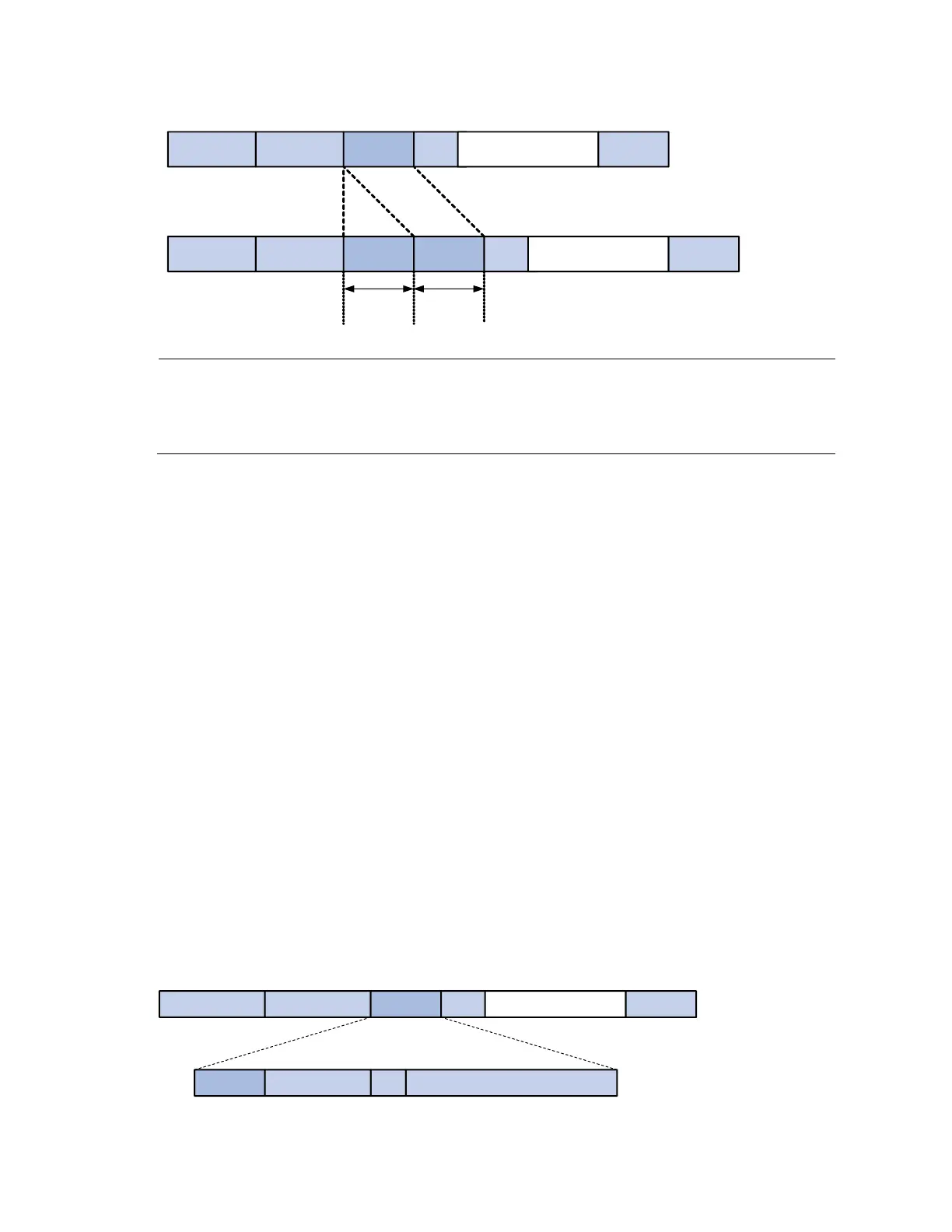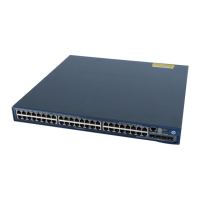157
Figure 50 Single-tagged Ethernet frame header versus double-tagged Ethernet frame header
Etype
DA SA
User
VLAN Tag
Etype DATA FCS
DA SA
Nested
VLAN Tag
DATA FCS
User
VLAN Tag
6 bytes 6 bytes
Single-tagged frame structure
Double-tagged frame structure
4 bytes
6 bytes 6 bytes 4 bytes 4 bytes
4 bytes
4 bytes
2 bytes
2 bytes
46-1500 bytes
46-1500 bytes
Outer
VLAN tag
Inner
VLAN tag
NOTE:
Ensure that all ports on the path of a QinQ packet allow 1508-byte or larger frames to pass through.
The minimum size of a QinQ packet is 1508 bytes, which comprises two four-byte VLAN tags and one
1500-byte standard Ethernet frame.
Implementations of QinQ
HP provides the following QinQ implementations: basic QinQ and selective QinQ.
1. Basic QinQ
Basic QinQ enables a port to tag any incoming frames with its PVID, regardless of whether they have
been tagged or not. If an incoming frame has been tagged, it becomes a double-tagged frame. If not, it
becomes a frame tagged with the port’s PVID.
2. Selective QinQ
Selective QinQ is more flexible than basic QinQ. In addition to all the functions of basic QinQ, selective
QinQ enables a port to perform the following per-CVLAN actions for incoming frames:
Tagging frames from different CVLANs with different SVLAN tags.
Marking the outer VLAN 802.1p priority based on the existing inner VLAN 802.1p priority.
Besides being able to separate the service provider network from the customer networks, selective QinQ
provides abundant service features and enables more flexible networking.
Modifying the TPID in a VLAN tag
A VLAN tag uses the tag protocol identifier (TPID) field to identify the protocol type of the tag. The value
of this field, as defined in IEEE 802.1Q, is 0x8100.
Figure 51 VLAN tag structure of an Ethernet frame
CFI
DA SA VLAN Tag Etype DATA FCS
TPID VLAN ID
6bytes 6bytes 4bytes
3bits 1bit 12bits
4bytes2bytes 46~1500bytes
User Priority
2bytes

